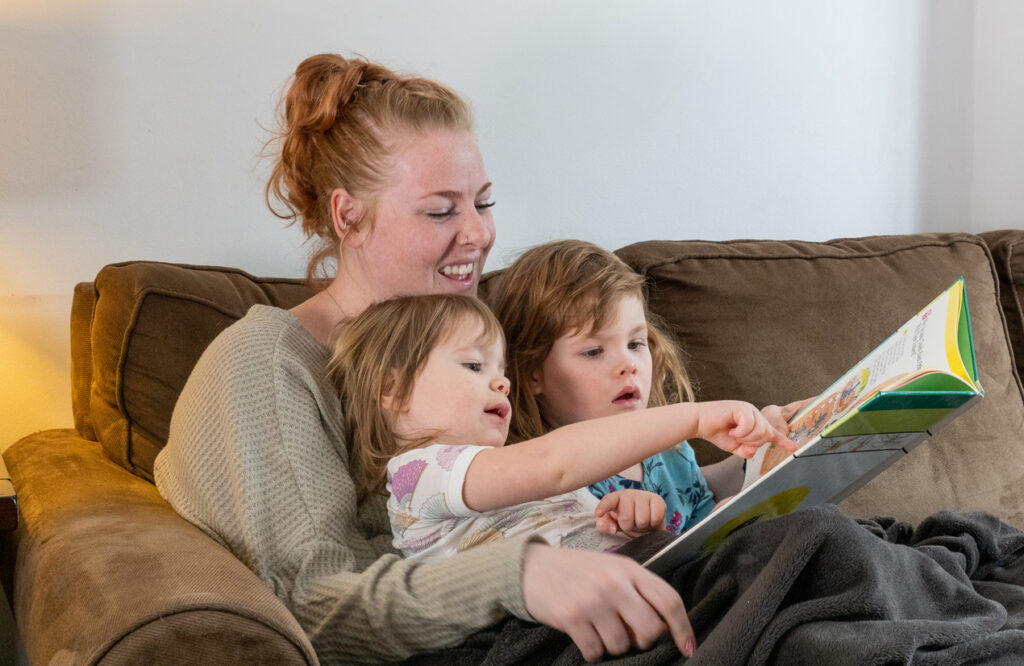Picture books are often the first books that children fall in love with. As well as giving you the chance to spend quality time with your child, beautiful illustrations can convey important messages. Good inclusive picture books allow children of all abilities to see themselves. Also, they encourage interaction and reflection, as well as teach children about friendship, inclusion, and diversity.
To give you some inspiration, we’ve put together a list of some of our favourite inclusive picture books. Happy reading!
Can Bears Ski?
Can Bears Ski? is the heartfelt tale of a young bear who is finding it hard to hear and is coming to terms with being Deaf. He is supported by his father and the people around him, as he learns to navigate the hearing world and find his way in social and educational settings. Written by Deaf author and poet Raymond Antrobus, this beautifully illustrated book is a moving story that shows us how many ways there are to communicate love.
Come Over To My House
This gorgeous inclusive picture book explores the home lives of children and parents who are Deaf or who have disabilities.
It’s co-written by disability advocate Eliza Hull and Australian Children’s Laureate Sally Rippin. The inclusive rhyming text explores the characters’ disabilities and the bright illustrations by Daniel Gray-Barnett, as well as the diverse characters make it a must-read.
Included
This picture book by Janyneen Sanders and illustrated by Camila Carrossine is a great conversation starter. It introduces six children with different disabilities: Sam has cerebral palsy, Rishi is autistic, Jay is deaf, Audrey has Down syndrome, Ty has ADHD and Zara has a limb difference.
Matt Formston: Surfing in the Dark
Matt Formston dreamed about being a professional surfer and becoming completely blind by five years old didn’t stop him. He’s now a world champion surfer and record-holding cycling Paralympian. Written by John Dickson and illustrated by Phillip Bunting, this inclusive picture book features braille alongside the conventional text.
Not So Different
Shane Burcaw was born with spinal muscular atrophy, but it hasn’t stopped him from doing the things he enjoys. He’s a fantastic communicator and this inclusive picture book is perfect for open discussions about disability. It’s a witty and honest window into his life, with his quirky humour coming out in how he answers questions about living with disability. We particularly love the story of him destroying his electric wheelchair’s motor when he used it to pull his brother to the top of a basketball hoop!
This inclusive picture book gives us the message that children with disability are just like children everywhere. They love playing games, making stuff, and being silly. There are things they’re good at and things they need to work on. And like children everywhere, they want to feel loved, safe, and included.
Remarkable Remy
“My best friend’s name is Remy. I think Remy is remarkable. Remy is autistic. That means Remy’s brain works differently to my brain.” Remy’s friend truly accepts and values Remy’s autistic ways. She has so many gifts and strengths to appreciate, like imaginative inventions, new ways to connect with nature, how to communicate without words, and being a loyal friend.
This inclusive picture book is written by Melanie Heyworth and illustrated by Nathaniel Eckstrom. Written in gender-neutral language, it highlights the experiences and strengths of autistic people and the joy of having autistic friends.
Some Brains
This delightful book celebrates neurodiversity. It starts from the premise that autism, ADHD, and dyslexia are a normal part of human biodiversity and that we should recognise that all brains are unique and wonderful, just like fingerprints. Nelly Thomas, the author, encourages us to look for our strengths and shows us that every child is special and smart.
Talking Is Not My Thing
Rosie is autistic and non-verbal amd she likes to have fun. In order to communicate her ideas and thoughts with her brother, she uses body language, drawing, and gestures.
This warm-hearted inclusive picture book by Rose Robbins is a beautiful story to share, as well as build an understanding of non-verbal communication.
What Happened To You?
Joe’s playing pirates in the playground when he’s asked, “What happened to you?” We then see Joe answering silly questions through a humorous storyline and wonderful illustrations by Karen George. By the end, the children in the playground focus on being pirates, not on Joe’s differences.
It’s based on author James Catchpole’s real childhood experiences of growing up with limb difference. Additionally, the book includes tips on how to talk to a child when they blurt out the question, “What happened to you?!”
When Charley Met Emma
This award-winning picture book looks at friendship, being inclusive and empathetic.
Charley meets Emma in a park and initially hurts Emma’s feelings because she has limb differences and uses a wheelchair. Eventually, with support from Charley’s mum and Emma’s sister, they discover they have lots of interests in common and become friends.
The book is written by Amy Webb and has an excellent four-step plan for parents and carers to help support friendships between children of all abilities.
Read more Books & TV
